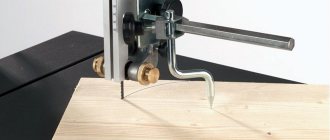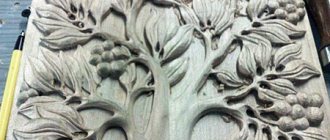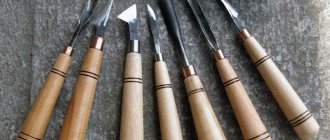Man has been using wood in everyday life since ancient times. They used it to build ships, build houses and temples, make furniture, dishes and toys. Wood carving was particularly warm and cozy. The works of masters in this field still fascinate with their beauty.
History of wood carving
The use of wood has been mentioned since primitive times among different nationalities in almost all corners of the Earth. The origins of wood carving date back to the use of techniques for processing this material and the emergence of wooden architecture. The first find made of wood is an idol discovered on the territory of present-day Yekaterinburg. The approximate date of its creation is attributed to the 8th century BC. It has been established that the body of the idol is covered with geometric wood carvings, and it itself symbolizes the connection between the underground and heavenly worlds.
As human society developed, the use of wood in rituals lost its meaning, new techniques for working with wood appeared, and tools were improved. People began to use wood to decorate household items. Since the 16th century, hand-carved wood became a universal craft, and the first workshops appeared. Skilled craftsmen decorate temples, royal palaces, and houses of rich people with skillful, original carvings.
Our ancestors were very closely connected with nature and considered wood to be a conductor between the sun and people, and wooden products were a symbol of health, prosperity and longevity. They also knew the valuable qualities of wood, such as water resistance, thermal insulation, a variety of textures and patterns of wood, ease of processing and preparation. Wood was used in all spheres of life: in the construction of defensive fortifications and houses, in the manufacture of dishes and tools.
Geometric carving
This type of wood carving is the simplest and most accessible to many craftsmen. Geometric threads are special wedge-cutting grooves of different directions and depths. The number of edges in each individual recess can also be different. But the most common ones are with two and three notches.
Triangular carving gives the greatest number of possible patterns. Fewer compositions can be created using tetrahedral carving, and it requires special skill from the carver.
Geometric threads also include staple threads. The design in it is made with a semicircular chisel, first at a right angle, and then at a sharp angle. For geometric wood carvings, linden, aspen, and coniferous wood is used.
Types of wood carving
Modern woodworking techniques do not have a clear classification. One product can combine several types of wood carvings. Artistic processing of wood can be divided into the following types:
- Flat grooved carving
, where the background is a flat surface, and the pattern is created from recesses of various shapes. - Flat-relief carving
, where the pattern is created by sampling the background. - Relief carving
, where there are no flat surfaces, there is a deep drawing of the background and a detailed selection of elements. - Slotted carving
, characterized by the absence of a background. The pattern is openwork, lace. - Sculptural carving
, characterized by a three-dimensional image. This technique is used to make toys, figurines of people and animals, wooden columns in architecture, and so on.
Flat wood carving
In this type of wood processing, the background is the flat surface of the product, and the pattern is created by notches of various shapes. Decorative wood carving using the flat-notch technique, depending on the nature of the notches, can be contour and geometric:
- Contour
wood or plant carving is similar to metal engraving, but is performed with different tools, and the lines are wider and deeper. This technique is easy to perform and can be done on plywood. - Geometric carving
gets its name due to the ornamentation that is depicted using this technique. These are mainly geometric elements: rhombuses, triangles, circles.
Flat relief wood carving
This technique of decorative wood processing is one of the most common. Manual processing of wood in this case consists of background sampling around the pattern, and as a result the pattern is uniform in depth for the entire composition. This technique depicts animals, people, and plant ornaments. It is used in applied arts and architecture.
Relief wood carving
Expressive and painterly technique. It is distinguished by an abundance of light and shade and three-dimensionality of the image; the details of the elements are worked out to the point of being sculptural. Depending on the height of the elevation of the picture above the background, the following are distinguished:
- Bas-relief carving
, when the pattern rises to half the thickness of the entire composition. - High relief carving
, when the pattern protrudes more than half.
Geometric shapes, images of plants and animals, and symbols can be used as a subject for relief carving. The expressiveness of the product depends on the wood material. Beech, birch and oak are most suitable for this technique. Openwork wood carving (or in other words, slotted carving) in combination with contour, geometric and relief techniques gives extraordinary airiness and tenderness to the product.
Wood carving
In this type of woodworking, the background is completely removed from the canvas with a file or chisel. In another way, this type is called through wood carving. Mainly used in the furniture industry. Large-scale products are used to decorate building facades: in the decoration of balconies, platbands, cornices and are referred to as “house carvings”. For slotting techniques, pine, alder, birch, or aspen wood is used, usually 1-2 mm thick. Nowadays, this carving technique is used to decorate gazebos and country houses.
Sculptural wood carving
This technique for making products differs from all those listed by processing the workpiece from all or several sides. Various tools can be used, but the main ones are blunt knives and chisels. This type of wood carving is used in architecture (when creating columns, balusters, carved balcony posts), and in the manufacture of legs of expensive furniture. This technique is very beautiful and realistic - sculptural wood carving produces figures of animals and people.
Features, characteristic features
Wood carving is a type of decorative and applied art that was once widespread in Russia. Recently, it has been gaining popularity again. Previously, almost every region of the country had its own traditions of carving ornaments, patterns, figures of people and animals on wooden surfaces.
Wood is one of the favorite materials of Russians. Perhaps the roots of this love go deep into history and are lost somewhere in the times of pagan beliefs, when all natural objects were assigned sacred meaning, and trees were generally considered the “Kin” or protoplast of all things, the embodiment of Mother Nature.
In any case, wood is a very “warm”, cozy, homely material, which is also environmentally friendly. Today there are many ways to work with it, but traditional carving is a step above any “industrial” techniques. Carving out ornaments, paintings, figures, the craftsmen put a piece of their soul into their work.
In our article we will tell you how this type of art originated, and also introduce its main features and differences.
Workplace for wood carving
Creating wood products is a labor-intensive, painstaking, wasteful and noisy process that requires sufficient space to accommodate blanks, tools and finished canvases. Here are the basic requirements for a wood carver's place of work:
- Premises
. To work with wood, it is advisable to equip a separate, dry, bright room. - Lighting
. The work area should be moderately lit. The light source should be to the left and in front. Sunlight is excluded. - Desktop
. To work with small parts (souvenirs, spoons, small sculptures) you can use a simple table. To work with large parts, for example, in the house carving technique, you need a workbench. - Tools
and devices should be located as close as possible to the workplace and not interfere with work. It is advisable to secure chisels and other tools in special holders. For turning, you will need a wood carving machine. When using the slotting technique, you will also need a jigsaw and a sawing machine.
Volumetric thread
Three-dimensional wood carving is the most complex type of wood processing. It is also called sculptural. This type is characterized by the fact that the produced image seems to be distant from the general background. Forms a relief, sculpture or an entire sculptural group.
Volumetric carving requires real skill from the carver. Mistakes are not forgiven here. Special tools are used for manufacturing.
Homes were decorated with wooden figurines back in Ancient Rus'. They also made toys, animal figurines, and carved whistles. Three-dimensional carving found wide use in churches, where they decorated altars, carved images of saints, and carved crosses.
Volumetric carving also includes root plastic. For it, they take the lower part of the tree, which has a wide variety of shapes, and create original images.
Wood carving tools
Equipment for artistic woodworking can be divided into the following categories: basic (knives, chisels), additional (axes, planes, saws), auxiliary (power tools, spray gun). The modern market offers a wide range of carving tools. You can purchase them separately as needed, or you can buy a set for wood carving, where the necessary tools are professionally selected.
Let's take a closer look at the main types of tools. For wood carving, there are knives of different purposes and designs:
- A cutting knife is the main tool of any carver. The length of the handle and blade can vary, but the main cutting angle should be 35º.
- The jamb knife is used in the technique of slotted and flat-relief carving.
- The Bogorodsk knife is used for sculptural carving.
To create various samples, chisels are used, among which the most common are:
- Semicircular
. The main type of chisel used for any woodworking. - Direct
. Used for auxiliary work. - Klukarzy
. They have two bends of 120º. Necessary when preparing round bends and deep depressions in the relief. - Angle or surface planers
. Designed for contour cutting and creating a V-shaped groove. - Oblique
. With their help, longitudinal grooves are created and initial work is carried out on the workpiece. The blade of these chisels is beveled at an angle of 45º.
Contour thread
Contour carving refers to ornamental carving. Since the 15th century it has been widely represented in folk art. Contour wood carving is performed in the form of straight lines cut along the contour of the attached drawing.
From a distance, such carvings resemble engraving. It has a clearly defined pattern, quite dry and simple. The composition is often somewhat enlivened by various cuts and coloring.
For such carvings, a special knife and a curved chisel are used. From the outside, the carving appears to be simple, but it is not. It requires great skill, since it is necessary to avoid cuts and chips of wood.
Contour wood carving is most common in the Volga region and northern regions.
Wood carving - products
For many centuries, people and trees have been inextricably linked. Wooden products convey warmth, comfort and harmony. Currently, artistic or figured wood carving is popular. Some notable examples of products include:
- Original decoration of kitchen boards.
- A massive and at the same time original bench.
- A painting depicting a historical moment.
- A box completely decorated with wood carvings.
- An original souvenir for fans of military equipment.
- Decoration of railings for the stairs to the second floor.
House carving
The main characteristic of home wood carving is its large scale. It is performed using the simplest tools: an ax, a chisel and a saw. Coniferous wood is used.
Wood carving for home decoration was well developed more than five centuries ago. In the north of Russia, the most ancient wooden buildings decorated with carvings have been preserved. There are many wooden carved houses in the Volga region.
Many researchers believe that the art of decorating residential buildings with carvings came from shipbuilding. Often house and ship carvings mean the same thing. House carvings are divided into volumetric, relief and slotted.
Probably the first three-dimensional carvings were on the bows of ships. They included figures of a bird, a horse, and a deer. Relief carvings decorate the gables of houses, windows, and trim. The slotted look appeared in the 19th century. Openwork decorations were cut out with a jigsaw and decorated houses, railings, and entrances to premises.
Home → History of folk crafts → Wood carving
The art of wood carving has been known since ancient times. It was carved elements that decorated village and city wooden houses in Rus'. At the same time, these elements were made using simple and accessible tools - an ax, a saw, a carpenter's chisel. Over time, tools for carvers were improved and modified. Machines appeared with the help of which it became possible to realize the most complex patterns in wood.
House carving as a living form of folk art exists in rural areas to this day, and the underlying geometric carving, formed on the traditions of carvers of spinning wheels, gingerbread boards, and various household utensils, is considered a Vyatka folk art craft. Complex volumetric carvings are found not only on elements of houses, but also on expensive Vyatka furniture and church iconostases in temples.
Geometric wood carving
Geometric carving is one of the most ancient types of wood carving.
It is made in the form of two-, three- or tetrahedral recesses, forming on the surface a pattern of geometric shapes - triangles, squares, circles.
Geometric carvings lavishly decorated huts, religious buildings (iconostases, icon cases), all kinds of furniture (tables, benches, cradles, chests, chests, hooks for washstands), turned and dugout dishes (various bowls, ladles, salt shakers, trays, spoons, jugs) and tools (spinning wheels, weaving mills, rollers, seamstresses, gingerbread boards).
Back in the 20s of the twentieth century, in the Vyatka bazaars one could buy products decorated with skillful carvings. For a long time, the ancient craft existed separately. By the end of the 1930s, handicraftsmen united into artels. In 1947, the Pobeda artel united 107 homeworkers, half of whom were engaged in artistic woodworking. Artel produces boxes of various configurations, pencil cases, towel holders, medicine cabinets, decorated with geometric carvings and paintings.
In 1954, the artel mastered the production of carved boxes with inlay. In 1955, the artel carried out a lot of experimental work - the use of several techniques in the manufacture of one product (carving, inlay, burning, painting), the image became more complex, and landscape and architectural subjects of monuments in Moscow, Leningrad and other cities were introduced. In 1958, craftsmen and artists from the Pobeda artel completed a large order for the World Exhibition in Brussels. This year, the company’s assortment includes 70 types of artistic products and this is the only industrial market in the country with such a product profile.
With the formation of the Department for the Production of Toys and Arts and Crafts in 1968, all activities in artistic woodworking were concentrated at the Ideal art products factory. Already in the 1970s, geometric carving became firmly established in the artistic design of the main product range of the Ideal factory.
From the simplest elements, master carvers learned to create rich patterns used to decorate not only boxes, but also various household items. Using traditional ornamental elements, craftsmen build the composition of the product on a circle, which is then carefully designed.
Clean carving, deep sampling of the background, large details of the ornament, necessarily enclosed in a frame of contour carving - these are the features of boxes from the Ideal factory.
To enrich the artistic image of the product, craftsmen use additional means to enhance the decorative effect of the product, using natural materials (straw, embossed birch bark) in the carved box.
Currently, the successor to the Ideal factory, the Ideal Plus enterprise, is engaged in the artistic processing of linden, birch, juniper, alder, and caporoot. The assortment consists of about 350 items, including boxes of various shapes and sizes, chests, caskets, individual kitchen items, panels, photo frames, and board games.
A master from the city of Urzhum, Valery Anatolyevich Zabolotsky, has been engaged in geometric carving for 25 years. Even as a child, Valery Anatolyevich became interested in folk crafts: wood carving, bast weaving, and wicker weaving, and devoted his entire life to his favorite pastimes. The master passes on his craft to the younger generation, conducting classes at the “Center for Further Education” in the city of Urzhum for 18 years. Valery Zabolotsky considers his personal achievement to be the fact that most of the graduates of his association “Wood Carving” connected their lives with geometric carving, and this craft became the main source of income in their lives. In 2007, by decision of the Artistic Expert Council on Folk Arts and Crafts of the Kirov Region, Valery Zabolotsky was awarded the status of a master of folk arts and crafts of the Kirov Region.
Volumetric thread
Many Vyatka churches have preserved iconostases - monuments of monumental and applied art. They owe their high artistic value to the skill of local woodcarvers. Canonical requirements, metropolitan stylistic trends and local artistic preferences determined the appearance of original works in Vyatka art.
Stone churches, which began to be built on Vyatka land from the end of the 17th century, were decorated with a traditional high Russian iconostasis, both tyablo and carved in the “Moscow Baroque” style.
The earliest surviving and outstanding monument of local monumental decorative and applied art of the late 17th – early 18th centuries is the iconostasis of the Assumption Cathedral of the Vyatka Trifonov Monastery. The wooden, gilded, five-tiered iconostasis is distinguished by a high level of professional execution and is a rare example of “Flemish carving.”
The popular type of Vyatka iconostasis of the second half of the 18th century uses the technique of impulsive growth of forms towards the center and upward while maintaining a high-rise tiered structure. Another type of local iconostasis is more static in the overall design of the outlines of the structures. Columns are introduced into the division, and the sculptural design is preserved.
The establishment of the principles of classicism in the architecture of Vyatka iconostases at the beginning of the 19th century led to the appearance of the triumphal arch motif in many compositions. The arch motif became an indispensable motif of Vyatka classical iconostases. An arched arc was placed above the royal doors, enhancing their significance in the composition.
The work on decorating iconostasis with carvings was less regulated than the work of an icon painter or an architect. The decorative design of iconostasis with carvings was carried out by craftsmen in accordance with their tastes, especially in the case when the overall composition was created by a carver. Working on the iconostasis along the architectural “facade”, the master could develop his creative imagination within the boundaries of the “area” allocated to him, embodying “wooden patterns” in various variations. Masters submitted samples of their skills in the form of drawings to the consistory for approval.
Strict iconostasis of the classicist style, decorated with an order, were built at the end of the 19th century, although since the 1860s, under the influence of eclectic romanticism, the interiors of Vyatka churches have changed. The iconostases become lush: in some cases light and delicate, in others heavy and rough, but always craftsmanlike.
For centuries, Vyatka iconostases testify to the talent of local craftsmen who create original, always luxurious and complex in the nature of decorations and graceful work. Their intricate forms revealed folk aesthetic ideas, which gave rise to the Dymkovo toy and the patterns of Kukar lace.
The glorious traditions of Vyatka iconostasis carvers have been continued since 1986 by the Kirov furniture studio “Aristokrat” (until 2011, the Palmetta enterprise). Over the years, the company’s specialists have designed, manufactured and installed dozens of iconostases in churches in various cities of Russia.
Slotted or sawn thread
This kind of carving is also called through, openwork for its external resemblance to lace. Its elements do not have a background as such and often do not have internal areas of the figures - all this is cut out (cut - hence the name) with a jigsaw or saw. Numerous jagged and stepped ornaments decorated the platbands and pediments of houses, and also framed entrances above doors, staircase railings and porch cornices.
Russian peasant housing combined practicality and extraordinary beauty. Various architectural details carried a certain figurative meaning (ancient functions of a talisman) and at the same time played a decorative role. For example, the need to close the gaps that inevitably arise between the log wall of the house and the window frame gave rise to the appearance of platbands, which decorate the house and are its kind of border with the outside world.
Among our contemporaries - master carvers, one can name the name of Gennady Yakovlevich Lopatin. He decorates the museums of the city of Kirov with his works in sawn carvings. Thus, for the house-museum of the writer Saltykov-Shchedrin, the master made a gate, a well, a swing, and for the museum-estate of the artist Nikolai Khokhryakov, a gazebo was decorated with carvings. There are carved works by the master in the areas of the Kirov region, as well as in other cities of Russia (Moscow, Krasnoyarsk, Kaluga, Khabarovsk, Komsomolsk-on-Amur, St. Petersburg). In 2008, Gennady Lopatin, by decision of the Artistic Expert Council on Folk Arts and Crafts of the Kirov Region, was awarded the status of a master of folk arts and crafts of the Kirov Region.
Curly patterns
State Historical, Artistic and Literary Museum-Reserve "Abramtsevo".
State Historical, Artistic and Literary Museum-Reserve "Abramtsevo".
State Historical, Artistic and Literary Museum-Reserve "Abramtsevo".
But what any critics have always been delighted with is the famous “curl”. Of course: this type of carving flourished under the patronage of recognized artists of the “Mamontov circle”, who set up a carpentry and carving workshop in Abramtsevo, the estate of the philanthropist Savva Mamontov. One of the students opened his own workshop in his village, Kudrin, where they worked on Abramtsevo orders. There the foundations of the new style were formed. Successfully coinciding with the then fashion for everything natively Russian, the new carving combined both ancient flat-relief and very ancient geometric. Branches, curls, rosettes, headpieces of early printed books, sketches by Elena Polenova, who studied in Paris and managed to add glamorous chic to ancient Russian ornaments - all this decorative wealth turned the “curl” into a noticeable phenomenon. Until now, this type of carving is considered one of the most popular in Russia and is included in the training standards for the training of professional wood carvers.
Types of slotted threads
Cut-out images are characterized by the presence of through patterns. They can be flat or voluminous; in the latter case, after creation, they are processed using special knives used for wood processing. Relief carving is also called lace carving.
If the image remains in the form where the holes made by the master are visible, then such images can be called through. Sometimes it is glued onto a wooden base and a kind of bas-relief is obtained. In this case, the pattern is called overhead.
This technique is also used for house cutouts. In this case, we are talking about the manufacture of parts for decorating wooden houses. It has its own characteristic features. One of them is the desire to avoid small details.
Secret geometry
Spinning wheel leg. Vologda region, Tarnogsky district, Denisovskaya village. Master Stepan Ogloblin. 1890
Roller for beating clothes during washing. Zaonezhye. Late XIX - early XX century
Strand. Zaonezhye, Mezhvezhyegorsky district, Republic of Karelia
Geometric carving is the oldest design trend, known to mankind since pre-Christian times. Apart from a good eye and a confident hand, he did not demand anything from the master. Even a special tool: when applying the ornament, the carver could get by with an ordinary knife. As a rule, small objects were decorated with such carvings, which turned into a talisman. The fact is that the simplest patterns in the form of geometric shapes were symbols of elements and phenomena. By placing them in a certain order, the ancient masters tried to protect themselves from the forces of nature or, conversely, call on them for help. Such patterns were a kind of magic book for those who knew how to read them. A rosette with rays or just a circle called the grace of the Sun into the house. The cut diamonds were supposed to give the owner strength and power. A pattern of triangles applied to a primitive figurine of a horse was supposed to bring health to all livestock. Subsequently, rarely did any of the carvers use geometric carving according to pagan covenants - with the required number of spells and the number of swings of the knife. But objects decorated in this way can still be found in northern villages.











